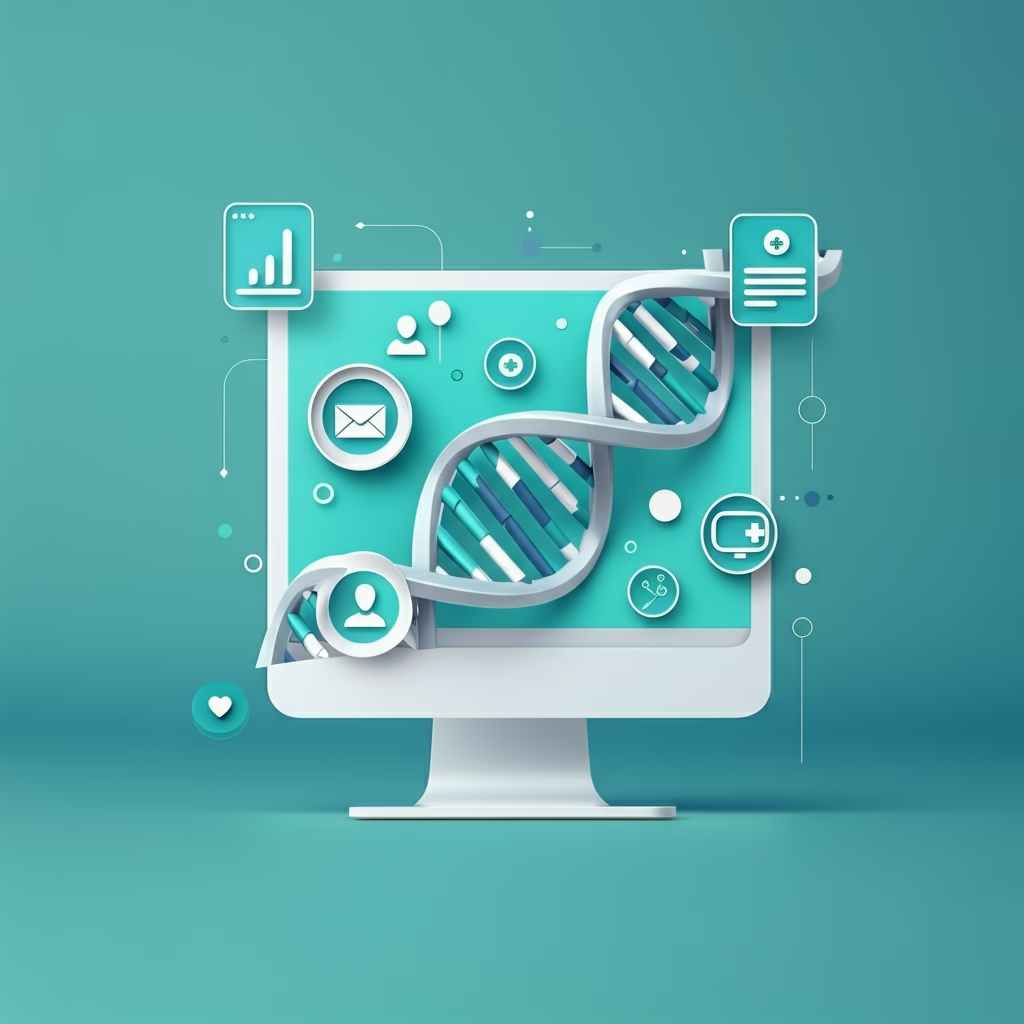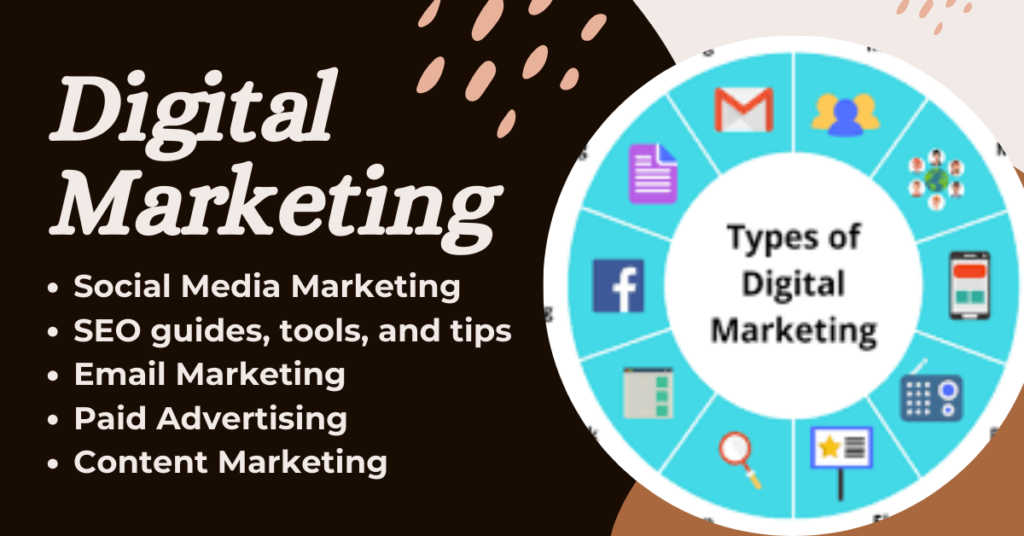The life sciences industry is at a fascinating crossroads. On one end, it’s driving tremendous innovations that shape our understanding of health and disease. On the other, it grapples with the challenge of reaching and engaging highly specific audiences in a competitive and digitally-driven world. Enter digital marketing in life sciences, a tool not just for selling products or services but for building connections, creating trust, and sharing knowledge with researchers, healthcare professionals, and patients alike.
The role of digital marketing in life sciences is set to evolve further by 2025. The future is all about personalization, compliance-driven creativity, and using powerful tools to achieve meaningful engagement. This guide dives into the strategies, tips, and examples that can take your digital marketing game to the next level.

Why Digital Marketing Matters for Life Sciences
Before jumping into strategies, it’s worth exploring why digital marketing has become indispensable in the life sciences industry. Unlike sectors with a broader consumer base, life sciences cater to niche audiences such as medical researchers, healthcare providers, patients dealing with specific conditions, and regulatory officials. Traditional marketing, while still important, often cannot provide the depth, agility, and customization needed to reach these audiences effectively.
Here are a few key reasons why this shift to digital marketing is not just beneficial but critical:
- A Digitally Active Audience
Doctors, researchers, and even patients are now more digitally savvy than ever. According to statistics, over 70% of healthcare professionals use online content to stay updated on medical advancements, while patients turn to platforms like YouTube to understand treatments and therapies. - The Ability to Build Trust
Digital platforms allow you to create fact-driven, compliant, and educational content that fosters trust. Whether through an informative blog or a video explaining complex therapies, you can establish yourself as a reliable, informative source. - Cost-effectiveness and Reach
Digital marketing allows you to target very specific groups without the massive expense tied to in-person events or traditional advertising mediums.
These trends ensure that digital marketing isn’t just a nice-to-have but a must-have for the industry moving forward.
Building a Simple and Strong Digital Marketing Strategy
When starting or revamping your digital marketing efforts, it’s crucial to build a clear, step-by-step plan that integrates creativity with compliance. Here’s how:
1. Understand Your Audience’s Needs
The first step in any effective strategy is truly understanding who you are speaking to. The life sciences audience isn’t a monolith, so your strategy must focus on specifics.
- Healthcare Professionals (HCPs): They crave hard facts, scientific data, and cutting-edge insights. Less fluff, more substance.
- Patients: They look for hope, clear answers, and support. Empathy matters as much as information.
- Regulators: They need detailed, transparent, and legally compliant material to vet and approve.
Example in Action:
A pharmaceutical company launching a breakthrough migraine drug could create:
- A whitepaper for HCPs explaining the drug’s clinical trial data.
- Webinar series for patients sharing lifestyle tips for managing migraines.
- FAQ-style blogs that address regulatory checkpoints and approvals.
By customizing your message, you don’t just communicate; you connect.
2. Optimize Your Website as a Credible Hub

Your website serves as the first impression for many of your audiences and is your most important digital “real estate.” A poorly designed, slow, or cluttered website can diminish user trust, no matter how groundbreaking your science is.
Key things to focus on:
- SEO Matters: Use strategic keywords (like our focus keyword, “digital marketing in life sciences”) naturally in your pages, blog titles, and meta tags.
- Clear Navigation: Make it easy for users to find HCP resources, patient education, or research documentation.
- Authority Signals: Add peer-reviewed articles, author bylines, and a resource library to establish your professional credibility.
Pro Tip:
Include an interactive feature like a “Clinical Breakthroughs Tracker,” aimed at providing ongoing updates on your research or pipeline. Users love dynamic, updated content.
3. Content Tailored to Listening, Not Selling
Unlike some industries where flashy advertising sells products, life sciences thrive on content that informs, educates, and engages. Your audience isn’t looking to be “sold” to; they’re looking to solve problems.
Types of Quality Content to Consider:
- Case Studies: Highlight how a treatment helped improve patient outcomes, supported by data.
- Videos: Short animated explainer videos simplifying concepts like stem cell therapy or RNA delivery mechanisms for patients and caregivers.
- E-newsletters: Regular updates featuring both technical details for clinicians and digestible summaries for patients.
Imagine visiting a site for a company that works in rare genetic therapies. Instead of overly technical jargon, the first thing you see is an animated video explaining, “How Gene Editing Can Change Lives,” followed by downloadable guides. This approach immediately makes the content feel welcoming and useful.
4. Engage Through Social Media with Purpose
Social media may seem like unfamiliar territory for many in the life sciences field, but platforms like LinkedIn, Facebook, and even TikTok are powerful when used correctly. However, each platform requires its own specific strategy. For example:
- LinkedIn: Position your organization as an industry thought leader, sharing industry trends, whitepapers, and awards.
- Twitter (X): Great for short updates, research announcements, or live coverage of industry conferences.
- YouTube: Perfect for hosting tutorials, patient testimonials, and interviews with scientists.
Pro Tip:
Run a patient-matching campaign on Facebook. If your organization is conducting clinical trials, use the platform’s precise targeting capabilities to find specific patient communities.
Take the case of a biotech company promoting a therapy for a rare disease. They created mini-interviews with patients (with consent) and shared them across platforms under a campaign hashtag #OneStepCloser. This campaign didn’t just raise awareness; it brought a human face to the science.
5. Prioritize Compliance-Friendly Creativity
The life sciences sector is no stranger to strict regulations, and digital strategies must take this into account. That doesn’t mean sacrificing creativity. Instead:
- Use disclaimers to your advantage. Place them clearly but unobtrusively in your content.
- Get internal regulators involved early in your marketing review process.
- Prioritize educational formats, which not only engage audiences but usually fall well within compliance frameworks.
Real-World Hook:
A pharmaceutical firm created an AI chatbot called “AskGen,” specifically designed to provide HCPs with real-time, compliant answers to common regulatory questions. It took a highly technical area and turned it into an interactive digital solution.
6. Measure Success and Optimize
You can’t grow what you don’t measure. Life sciences digital marketing strategies need clear KPIs, depending on your goals.
Consider these examples:
- For content marketing, track dwell time and download rates of whitepapers.
- For social media, engagement metrics like shares or direct messages matter.
- For email campaigns, go beyond open rates to focus on click-through rates and downstream actions.
Gather these data points using tools like Google Analytics, social media insights, or industry-specific CRMs, and your marketing will become smarter over time.
Advanced Strategies for 2025
The future of digital marketing in life sciences involves more than traditional content creation. It also involves adopting advanced technologies and experimenting with innovative formats.
AI and Machine Learning
Digital tools embedded with AI can:
- Predict user behavior based on interaction data.
- Personalize the reading experience based on prior content consumption.
- Automate repetitive but compliance-heavy tasks, freeing up your focus.
Virtual Experiences
Virtual and augmented reality technologies are surprisingly effective for life sciences education. Imagine giving patients a VR experience showing how a drug works inside the body!
Collaboration with Influencers
Healthcare influencers, patient advocates, and even clinician-vloggers can play a role in amplifying your message while staying grounded in facts.
Final Words
Digital marketing in life sciences is not simply about keeping up with change; it’s about leading it. It’s a chance to connect deeply with audiences, educate responsibly, and showcase the incredible advancements the human race continues to make through science and research.
Start small but be strategic. Build trust by staying compliant and engaging. By focusing on genuine connections and delivering value, you’re not just marketing a product or service; you’re fostering a relationship that could lead to groundbreaking discoveries in human health. And that’s an exciting future to be part of!




